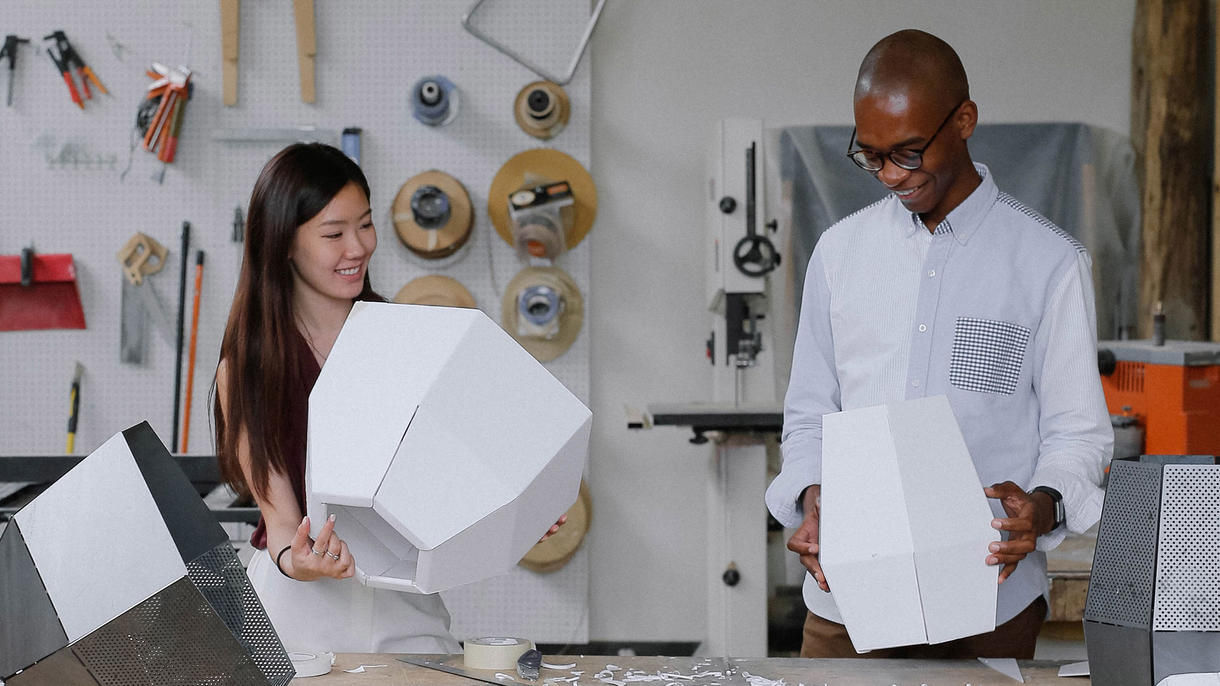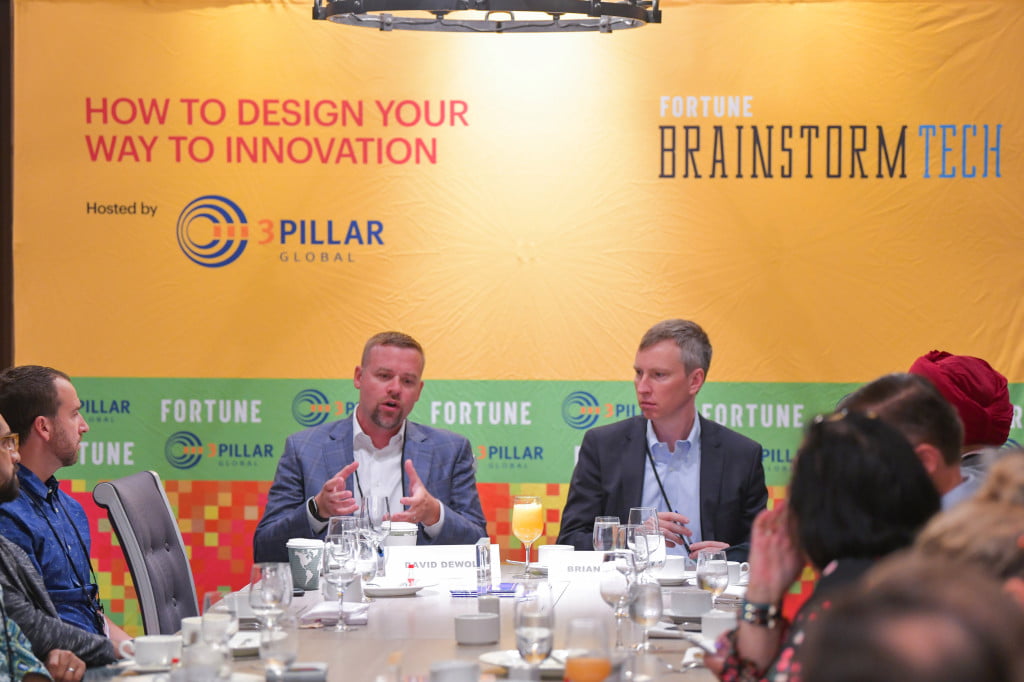

Some college students spend their summers lying on beaches or backpacking through Europe, while the intrepid among them may take on an internship or a part-time job. But architecture students Nino Chambers and Claire Lin took the idea of extracurricular experience to a new level this summer, visiting 30 design companies in eight cities over five weeks.
Their immersive trip was part of a student design fellowship that aims to teach students about the creation of original designs from start to finish. The program was developed by the organization Be Original Americas, which promotes education about the value of authentic designs. The fourth-annual fellowship brought Lin and Chambers to visit Blu Dot and Hennepin Made in Minneapolis; Herman Miller in Zeeland, Michigan; New York–based companies Carnegie and Flavor Paper; Design Within Reach in Stamford, Connecticut; Niche Modern in Beacon, New York; Emeco in Hanover, Pennsylvania; and Bernhardt Design in Lenoir, North Carolina. The students also visited architecture and design firms including Gensler, Rottet Studio and TPG Architecture, among others.

As their whirlwind fellowship was wrapping up, Business of Home spoke with Lin and Chambers about what surprised them, what intrigued them and the lessons they’ll take back to school this fall.
Tell me about the summer you’ve had.
Claire Lin: It still feels like I’m in a dream. From architecture firms and manufacturing sites, to furniture showrooms and design studios—and everything else in between—I realized there is so much amazing design work out there to partake in.
Was there a company that made a lasting impression on you?
CL: A favorite of mine was Hennepin Made, a glassblowing company based in Minneapolis. I loved their focus on community integration. Their business strategy connects with the public and grows brand awareness through spatial interaction. They reimagined the concept of a traditional showroom as a coffee shop, which features their own lights and other glass products. Their office functions also like a co-working space to house other design companies and creatives, which I find to be super rad!
Nino Chambers: In visiting Carnegie, it was eye-opening for me to learn about the intricacies of textiles and to see the operation of a mill. I really resonated with the ethos behind the brand and Carnegie’s lasting commitment to sustainability. The innovation and exploration of the Xorel yarn into many different applications and products has furthered my interest in materiality.
Do you feel like your understanding of the design industry has changed?

CL: In many other industries, competition drives innovation. Yet in the design industry, it seems like everything and everyone is interconnected. For example, architects work with interior designers. Interior designers must work with furniture companies. Furniture companies may work with textile mills to source materials for upholstery. There is a whole linkage that is vital and necessary in the design sector and as an architecturally minded student, I believe that space creation is successful when all parts are integrated into the process.
Do you feel like there are more opportunities in the industry than you were aware of?
NC: More than I could imagine. It’s not just architects and interior designers, there are so many different ways to utilize design thinking and business skills in the industry and they all are so important. Before the fellowship I didn’t have a true understanding of the breadth of different roles that exist in the field.

What was the most surprising aspect of the fellowship?
NC: For me, it has been learning the amount of work that goes into manufacturing products on a large scale. Having previously had no understanding of what really happens at production facility, I was astounded by the level of human involvement required to produce the things that we use without a second thought.
CL: For me, it was when I was working the assembly line for a chair at Herman Miller’s Greenhouse Factory in Holland, Michigan. Seeing all of the different manufactured parts, from tiny fulcrums to seat pads, I began to think about the design process from an engineering perspective. How do we design simply within the constraints of manufacturing while pushing the boundaries of existing practices?
Will this change how you approach your design education?
NC: Before the fellowship, I approached projects from a top-down perspective. I will be much more thoughtful in material selection as well as in finishing the spaces that I design. I also think that having the opportunity to go to architectural job sites and manufacturing facilities has given me a level of practical knowledge that will make the remainder of my design education more sensitive to the technical considerations that exist.
CL: I realized that there are so many opportunities that I have in school to round out my education in design. I’ve been really inspired now to take classes on furniture design and woodworking as well as engineering courses in material science, optics and circuits (to understand the technical side of lighting) once I head back to school in the fall. I can’t wait to spread the ideas I’ve learned to my peers and work with other young aspiring designers on educating others on the value of original design and craftsmanship.
[“source=businessofhome”]





